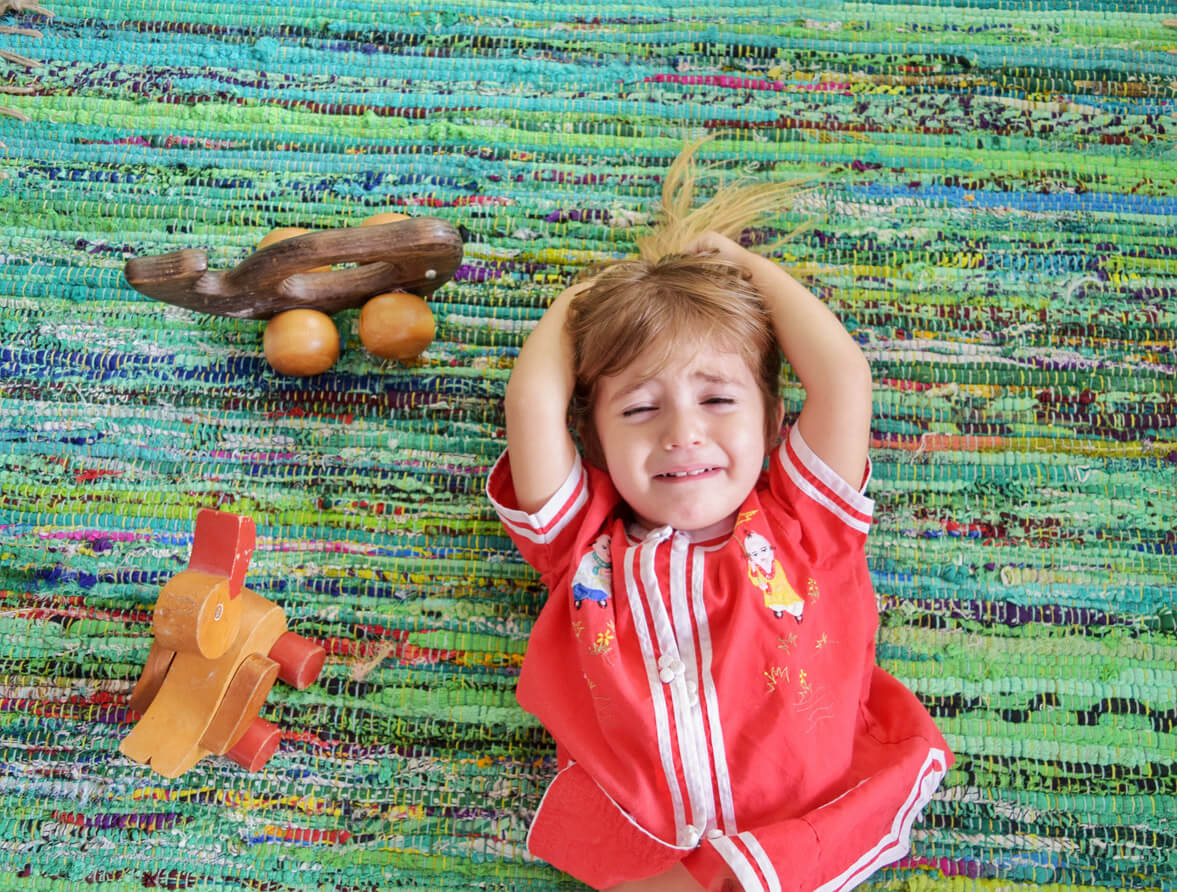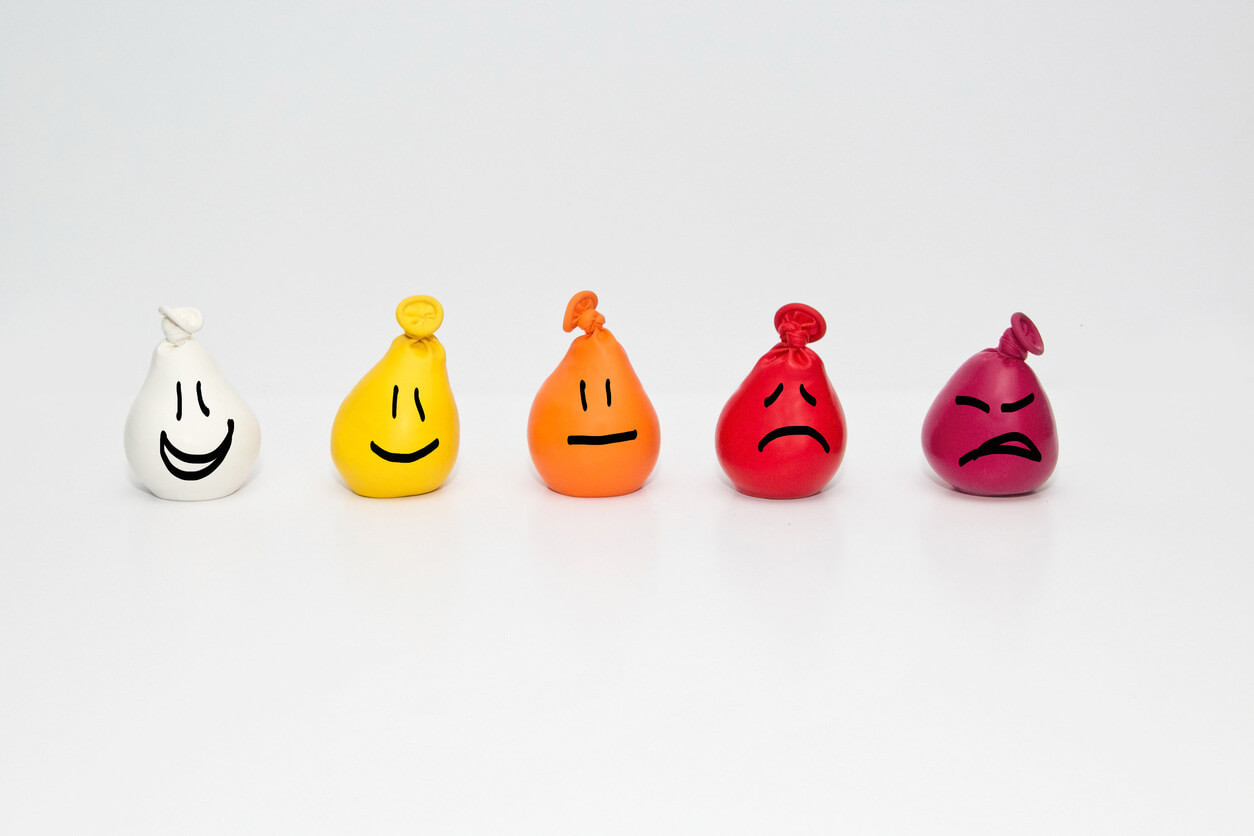As parents, it’s easy to write off the temper tantrums, the sibling rivalry, and the need for instant gratification by joking, “I know, kid. It’s hard to be four.” Sound familiar? But the reality is that it is hard to be four.
Children lack the emotional maturity to understand and deal with problems the way adults would, no matter how small those problems are. It’s helpful for parents to know that big emotions are normal for kids, and even something that you can talk about with them. Being honest about your feelings is also the hallmark of a Jewish value known as emet.

In the post below, you’ll find books, videos, and activities all about helping children manage big emotions.
READ
Night Lights by Barbara Diamond Goldin
Recommended for ages 4 to 6
On a dark night full of noises, a young brother and sister decide to sleep in the family sukkah. They realize that the stars they see in the sky are the same as those that guided the ancient Israelites on their journey through the desert.
Recommended for ages 6 to 7
This book is a kid-friendly telling of the Passover story via Sammy’s disappointment at not being chosen to portray one of the ten plagues in his school Passover play. Who wants to play the part of a matzoh?
Recommended for ages 3 to 7
Millie is usually quiet, but when classmates don’t listen to her or she doesn’t get her way, Millie decides she wants to be fierce, only to realize being fierce isn’t the best way to get noticed either, especially when it makes you mean.
Recommended for ages 4 to 5
Sadie is so proud of the menorah she made -- she can’t wait to show it to her mother! But, uh-oh -- in her haste, something terrible happens. How will Sadie be able to enjoy Hanukkah now?
Terrible, Terrible by Robin Bernstein and Shauna Mooney-Kawasaki
Recommended for ages 7 to 8
In this contemporary take on a beloved Jewish folktale, a rabbi helps Abigail discover the wonderful aspects of her newly-blended family.
Recommended for ages 2 to 5
Shopping is not little Llama Llama’s idea of fun, and he throws a tantrum in the middle of the store. This is the story of how Mama and Llama Llama learn to calm down and manage big emotions.
Recommended for ages 2 to 4
This beloved classic tale of the worst day ever has Alexander enduring gum in his hair, sitting in the worst seat in the car, missing dessert at lunch, the wrong pajamas pajamas, and kissing on TV—all in one day!
WATCH
Helping kids identify their emotions is the first step to managing the big ones. Here are some videos for kids and adults that explore where emotions come from and what to do about them.
Daniel Tiger helps friends understand that it’s okay to be upset with someone they love.
Murray the Monster helps kids identify what they’re feeling.
Can we choose when we're happy or when we're sad? What if we feel just "okay"?"Kids explain what it means to feel feelings.
Here are some fun and easy ideas for helping your kids flex their emotional intelligence muscles.
Daniel Tiger offers some coping skills for kids.
DO
MAKE AN EMOTION CHART

Help your child create an emotion chart or wheel, identifying the feelings that can sometimes feel overwhelming. Draw pictures for each one to refer back to them later. You can even try including specific triggers or coping methods so that the chart points to solutions too.
IDENTIFY CALM DOWN STRATEGIES

Together, make a list of ways your child prefers to calm down. This might include drawing, yoga, running, punching a pillow, or listening to music. This is a helpful reminder that it’s ok to take time to recover, and there are safe, productive ways to do so.
MORE
10 Jewish Blessings for Everyday Situations (including temper tantrums)
5 Activities To Teach Your Child How To Deal With Anxiety via Playfull
Teaching Your Kids About Emotions via Playfull
« Find more activities, book lists, and recipes
July 16, 2018